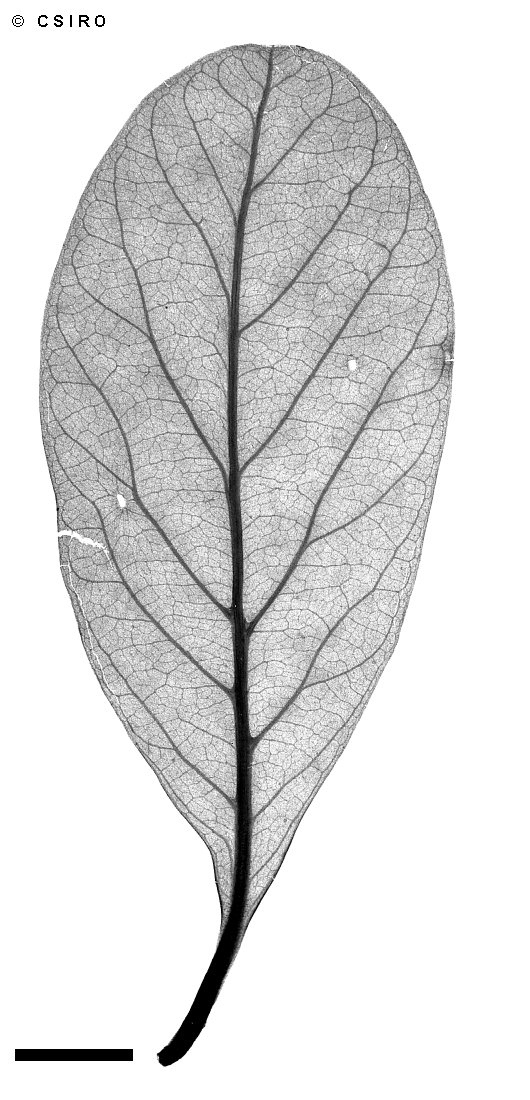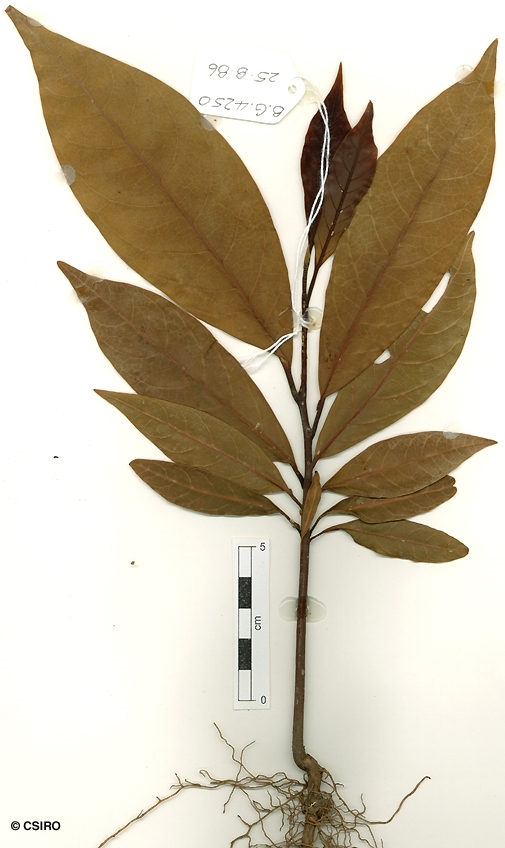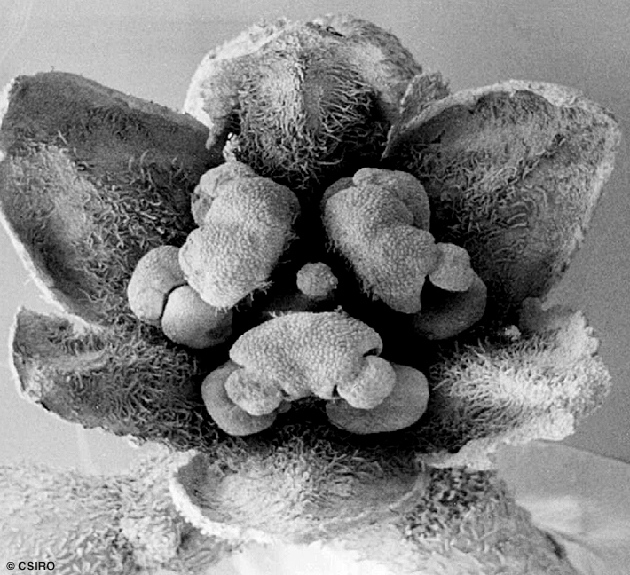Australian Tropical Rainforest Plants - Online edition
Endiandra bessaphila B.Hyland







Hyland, B.P.M. (1989) Australian Systematic Botany 2: 222. Type: B. Gray 939, State Forest Reserve 194 Western, 15.iii.1978 (QRS, holotypus).
Blush Walnut; Gully Walnut; Walnut, Blush; Walnut, Gully
A thin pale brown layer generally visible beneath the subrhytidome layer before the first section of the outer blaze.
Twigs fluted, clothed in straight, appressed, pale brown hairs when young but almost glabrous when older. Leaf blades about 6.5-17 x 3.5-8 cm, green on the underside (rarely slightly glaucous), clothed in straight, appressed, white or pale brown hairs when young but almost glabrous when older. Domatia (up to six) are foveoles and are usually visible on some leaves. Midrib flush with the upper surface. Petioles channelled on the upper surface. Oil dots visible with a lens.
Fruits ellipsoid, about 28-34 x 14-22 mm. Seed about 22-28 x 11-15 mm. Cotyledons cream.
First pair of leaves lanceolate or elliptic, about 45-90 x 18-24 mm, green on the underside. At the tenth leaf stage: leaf blade glabrous on the upper surface, a few inconspicuous hairs may be visible along the midrib on the underside of young leaves only; oil dots clearly visible with a lens. Seed germination time 24 to 52 days.
Fruit eaten by Cassowaries. Cooper & Cooper (1994).
This species grows large enough to produce millable logs but is seldom utilized. Wood specific gravity 0.65-0.68. Hyland (1989).





